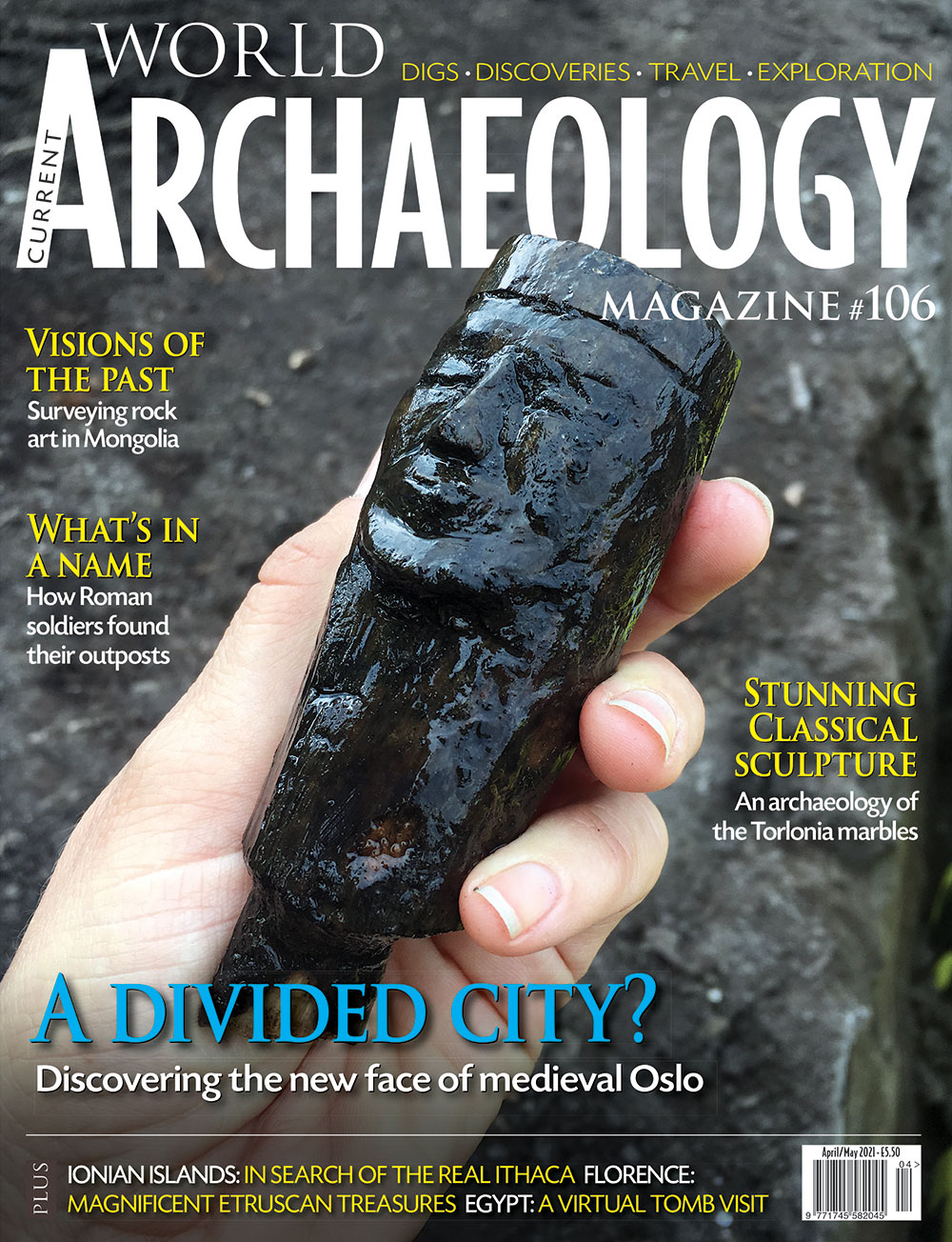It was the railways that first fired public interest in Old Oslo back in the 19th century. Although the crumbling ruins of palaces were still visible, when navvies began unearthing the well-preserved remains of timber houses where ordinary people dwelt, it ignited an enduring interest in the settlement. Now the railway has been at it again, with the Follo Line Project opening an astonishing window on to medieval life. This work is shedding new light on Old Oslo, with what was once viewed as a relatively uniform wooden town increasingly resembling a divided city.
An extraordinary concentration of rock art in Mongolia has also been springing surprises. Dating this imagery suggested that some examples were created back in the Upper Palaeolithic – thousands of years earlier than expected. All told, the 12,000 examples of rock art currently known belong to many different eras and capture a rich array of subjects, including wild animals, riders, archers, chariots, and the moment of birth.
Art was also on the minds of the 15th-century inhabitants of Rome. For centuries, Roman sculpture abandoned among the ruins of the imperial city had either been recycled as handy raw materials or ignored. But a new interest in forging links with the Roman past prompted citizens to seek out statues and claim them as ancestors. This very present need sowed the seeds of the great aristocratic collections of Classical sculpture, including the Torlonia marbles.
Contemplating small military outposts presents a rather different side to Roman life. These no-frills installations could be both numerous and distant from home bases. Just how did Roman soldiers find their fortlets?
In our travel section, Richard Hodges ponders the true identity of Homer’s Ithaca, while Oliver Gilkes recalls going in search of an Etruscan renaissance in Florence.

